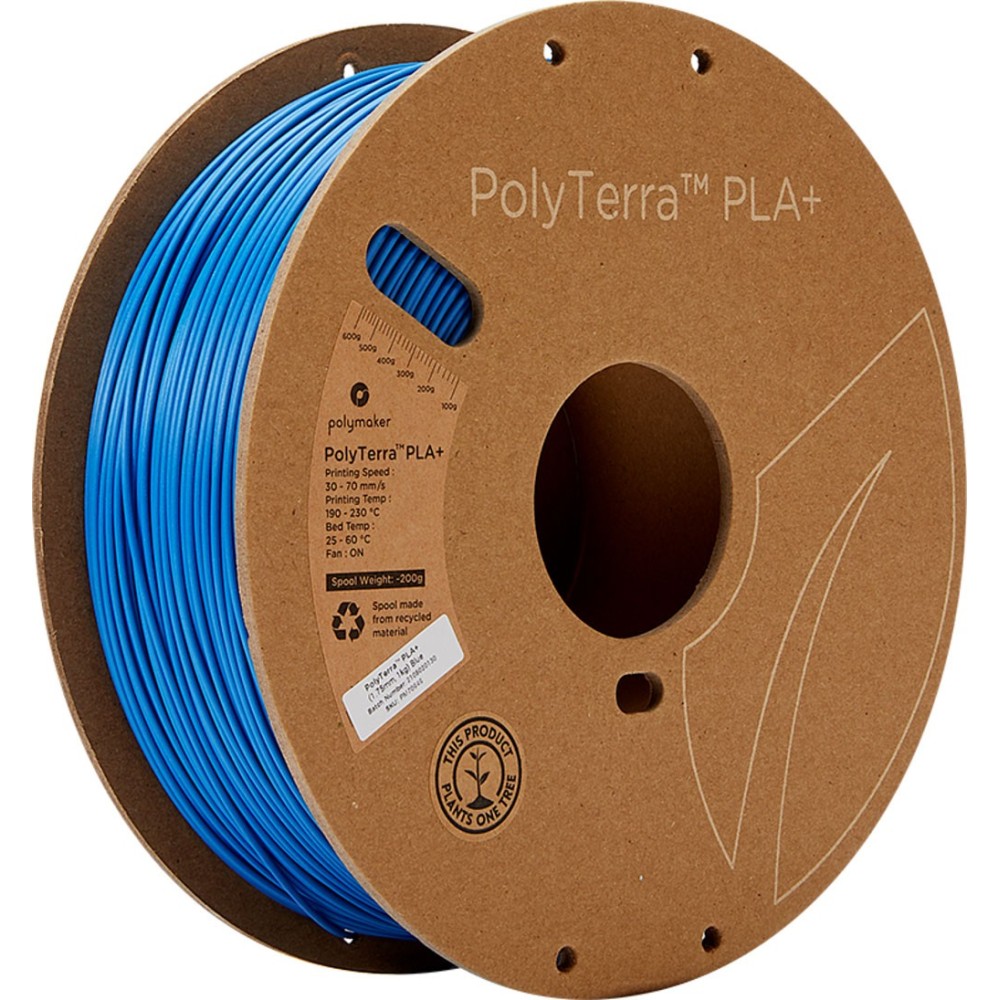
- غير متوفر حالياً

The 3D printing industry is constantly evolving, driven by the demand for materials that offer better performance, ease of use, and environmental friendliness. Polymaker, a leading innovator in 3D printing filaments, has introduced PolyTerra PLA+, a next-generation material that sets new standards for toughness and layer adhesion. Let's delve into what makes PolyTerra PLA+ a standout choice for both professional and hobbyist 3D printers.
PolyTerra PLA+ is engineered to deliver superior toughness compared to standard PLA filaments. This enhanced durability opens up a wider range of applications, from functional prototypes to end-use parts that require a higher resistance to impact and stress. The material's toughness makes it ideal for printing mechanical components, tools, and even consumer products that must withstand regular use.
The improved toughness is achieved through Polymaker's unique formulation, which balances rigidity with flexibility, ensuring that printed objects can endure significant wear and tear without compromising on structural integrity. This makes PolyTerra PLA+ a versatile choice for any project that demands robust performance.
One of the critical factors in achieving high-quality 3D prints is the adhesion between layers. Poor layer adhesion can lead to weak points in the printed object, causing it to fail under stress. PolyTerra PLA+ addresses this issue head-on, offering excellent layer adhesion that ensures strong, reliable prints.
This enhanced adhesion is particularly beneficial when printing complex geometries and large objects, where consistent layer bonding is crucial. With PolyTerra PLA+, users can expect smoother surfaces, reduced warping, and fewer print failures, making the printing process more efficient and less prone to errors.
To get the best results from PolyTerra PLA+, it’s essential to adhere to the recommended printing parameters. The material has a density of 1.24 g/cm³, which provides a good balance between strength and printability. The recommended nozzle temperature for PolyTerra PLA+ is between 190-220°C, allowing for flexibility depending on the specific requirements of your print job and the capabilities of your 3D printer.
The build plate temperature should be set between 30-60°C. This range helps to ensure good adhesion to the print bed while minimizing issues such as warping and detachment. Additionally, PolyTerra PLA+ supports a printing speed of 30-70 mm/s, offering a good balance between print quality and production speed.
PolyTerra PLA+ is not just about performance; it's also about sustainability. Polymaker has developed this filament with the environment in mind, using eco-friendly materials that reduce the environmental impact of 3D printing. This makes PolyTerra PLA+ an excellent choice for eco-conscious makers who are looking to reduce their carbon footprint without sacrificing quality.
Polymaker PolyTerra PLA+ represents a significant advancement in 3D printing filament technology. Its superior toughness and enhanced layer adhesion make it a reliable choice for a wide range of applications, from detailed models to functional parts. By adhering to the recommended printing parameters, users can achieve outstanding results with ease. Moreover, its environmentally friendly composition aligns with the growing trend towards sustainable manufacturing.
Whether you're a seasoned professional or a 3D printing enthusiast, PolyTerra PLA+ offers the performance, reliability, and sustainability needed to bring your creative visions to life. Explore the possibilities with PolyTerra PLA+ and experience the future of 3D printing today.